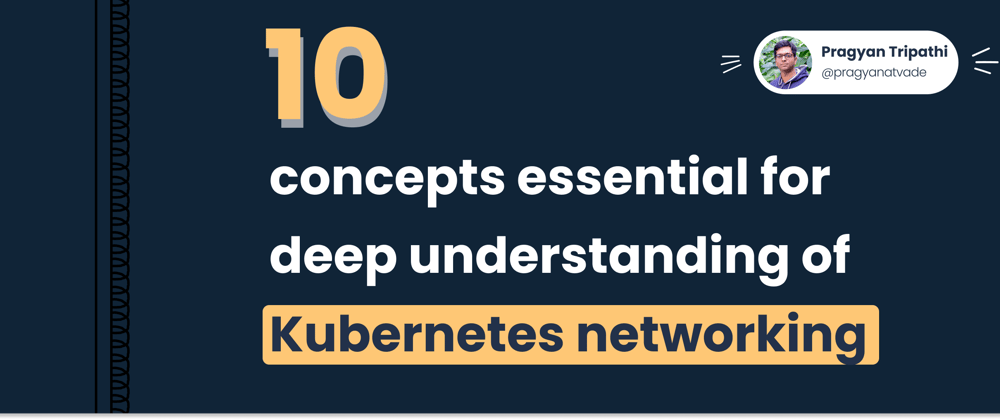Kubernetes is a powerful container orchestration platform that has become widely adopted in the world of cloud-native computing.
10 concepts that are essential for anyone looking to gain a deep understanding of Kubernetes networking:
1. Pods:
A Kubernetes Pod is a group of one or more containers that are deployed together on the same host. Pods are the smallest deployable units in Kubernetes.
2. Services:
A Kubernetes Service is an abstraction that defines a logical set of Pods and a policy by which to access them. Services enable the connectivity and load balancing of traffic to the underlying Pods.
3. Labels:
Labels are key-value pairs that are attached to Kubernetes objects, such as Pods. Labels can be used to organize and select subsets of objects based on their metadata.
4. Ingress:
Ingress is a Kubernetes resource that enables inbound connections to be routed to the correct service. It can be used to provide external access to services, load balance traffic, and implement layer 7 routing rules.
5. Namespaces:
Kubernetes Namespaces are virtual clusters that can be used to partition resources within a Kubernetes cluster. This allows multiple teams to share the same cluster while still maintaining their own isolated environments.
6. Network Policies:
Network Policies are rules that are used to define how groups of Pods are allowed to communicate with each other and with external networks. Network Policies are used to implement network segmentation within a Kubernetes cluster.
7. Service Discovery:
Service Discovery is the process of locating a service instance in order to route traffic to it. Kubernetes provides built-in service discovery mechanisms that enable Pods to discover each other and establish communication.
8. DNS:
Kubernetes includes a built-in DNS server that automatically assigns DNS names to Kubernetes services. This allows Pods to easily discover and communicate with each other using DNS names instead of IP addresses.
9. Load Balancing:
Kubernetes includes built-in support for load balancing traffic to Pods. This allows multiple replicas of a Pod to be created and distributed across the cluster, and enables incoming requests to be evenly distributed among the available replicas.
10. CNI:
The Container Network Interface (CNI) is an interface that defines how container runtime environments, such as Kubernetes, interact with network providers. CNI plugins are responsible for allocating and configuring network interfaces for Pods.
These concepts will provide a strong foundation for working with Kubernetes in production environments and enable you to confidently troubleshoot and debug networking issues as they arise.
Thanks for reading this.
If you have an idea and want to build your product around it, schedule a call with me.
If you want to learn more about DevOps and Backend space, follow me.
If you want to connect, reach out to me on Twitter and LinkedIn.







Top comments (0)